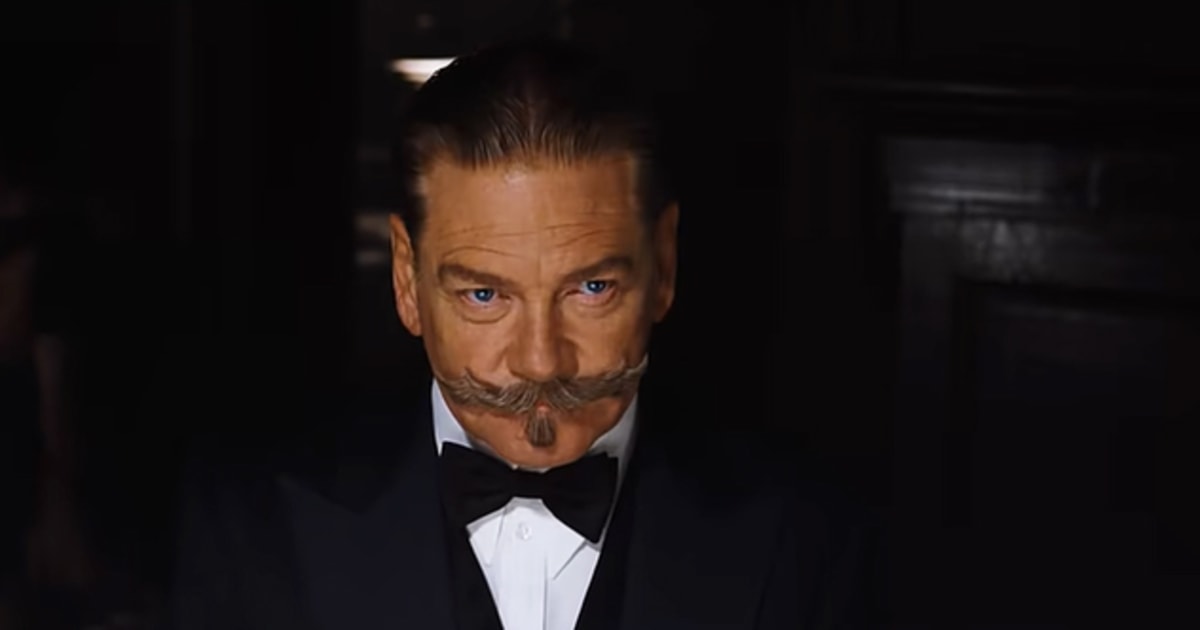
There’s a new superhero franchise in town, I’m sorry to say.
In Kenneth Branagh’s new version of Agatha Christie’s much-adapted “Death on the Nile,” everything is bigger. The Karnak — the big steamboat aboard which heroic detective Hercule Poirot (also Branagh) must solve a murder most foul — is overwhelmed by its enormous glassed-in parlor. Poirot’s face is approximately 40 percent mustache. Ravishing stars and starlets flit in and out of the frame, grasping suggestively at one another; the romance novelist from Christie’s original book is now a sultry jazz singer. When Poirot discloses his detections to the suspects, he’s holding a gun on them. Every location is established with a swooping drone shot, many of which are dressed up with distracting and awkward computer graphics. As the movie wore on — there are more than two hours of this — I began to think of it as “Death on the Nile: The Las Vegas Spectacular.”
In Kenneth Branagh’s new version of Agatha Christie’s much-adapted “Death on the Nile,” everything is bigger.
Branagh and screenwriter Michael Green have mixed up the plot of the original book in engaging ways, adding and subtracting plot elements and people. They add both Black and gay characters to a period piece set among the British aristocracy in the 1930s, but when they acknowledge prejudice, it is with the softest possible whisper. Nobody, not even the villains, is anything like a bigot. (Christie is notably not known for her progressive racial views: The original title of another much-adapted Christie novel, “And Then There Were None,” is unprintably offensive.) The film’s utopianism is all the weirder because of the added forbidden romance between a Black character and a white one; why the romance might be forbidden is never fully articulated.
The film follows Poirot to a jazz club, where he watches a beautiful young woman named Jaqueline (Emma Mackey) lose her fiancé, Simon (Armie Hammer, whose appearance post-assault allegations may explain the movie’s tepid marketing), to the glamorous Linnet (Gal Gadot). Then, somehow, we are in Egypt, on Poirot’s ill-fated vacation to Cairo, where he runs into an old friend, Bouc (Tom Bateman), who is sponging off his mother, Euphemia (Annette Bening), and trying to conceal his torrid romance with Rosalie Otterbourne (Letitia Wright), niece of jazz singer Salome Otterbourne (Sophie Okonedo).
It feels, in short, like “Marvel’s Hercule Poirot”: Every great actor available is hard at work here, trying to do what they can with their screen time limited by absurdly overdone camerawork. Every rough historical edge is sanded away, every moment for a potential reverie executed gangland-style and sent to sleep with the fishes. We even get a black-and-white prologue, a flashback revealing the war-torn origin story of Poirot’s mustache. I can only assume there will be tie-in series on Disney+ — “Two-Fisted Tales of Scotland Yard”; “Poirot/Holmes: Origins”; “Strange Mustachios.” Given that this itself is a sequel to Branagh’s “Murder on the Orient Express,” we’re perilously close to the kind of serialized entertainment in which you’d expect to see people shooting energy beams at each other.
The funny thing is that despite Branagh’s best directorial efforts, large parts of the movie are watchable, and even pleasant, because he remains a delightful performer. And so are his peers.
Christie’s stories are often called “drawing-room murder mysteries” because of the inevitable climax, in which the brilliant Poirot summons all the suspects to the parlor and narrates the motives, methods and, finally, the name (or names) of the killer. It is not especially hard to guess who the killer is here, even with the new window dressing, but that’s not the point.
Edmund Wilson, in 1945, wrote a ringing castigation of Christie and all her works called “Who Cares Who Killed Roger Ackroyd?”; well, I do, for one, and not because I don’t know the answer. Christie’s characters agonize over their social stations, something Green’s new characters communicate quite well. These emotions sometimes end in desperate crimes. We often feel sympathy, or at least pity, for Christie’s villains, and we still do in Branagh’s films.
Is that enough? Ultimately, Branagh seems to have no unifying directing principle beyond excess. But Branagh the actor still understands what makes his characters tick. Even loaded down with its huge terrarium of a drawing room and its silly plot holes and overwrought gunplay, this Karnak still has a working engine. And it doesn’t quite sink.
Source: | This article originally belongs to Nbcnews.com










